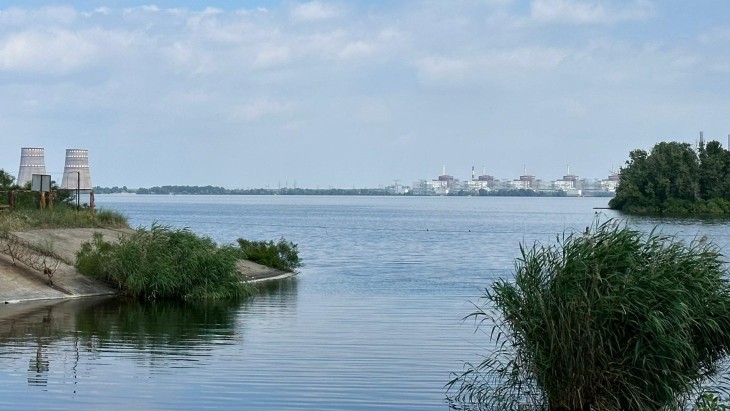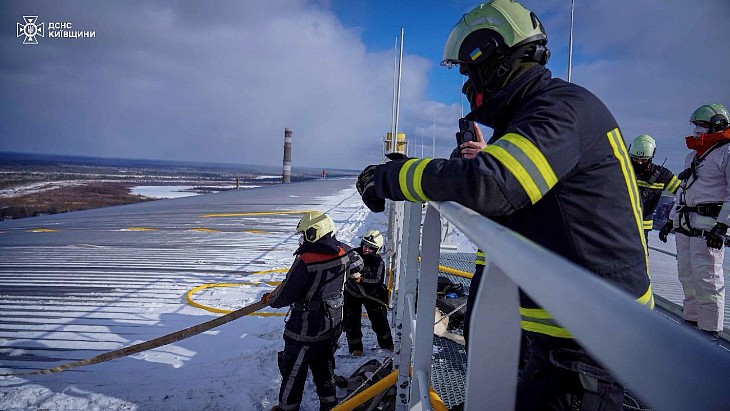IAEA experts continue Zaporizhzhia cooling tower fire investigation

In an update following the site visit on Monday, the IAEA said that "neither tyre nor drone remains were observed during the walkdown". Following Sunday's fire in the cooling tower, Russia accused Ukraine of causing it with drone attacks, while Ukraine accused Russia of causing it deliberately, or by negligence.
The IAEA has had a team of experts stationed at Zaporizhzhia nuclear power plant since September 2022. The six unit plant has been under the control of Russian forces since early March 2022, with the IAEA presence intended to help boost nuclear security and safety at the site.
The current members of the IAEA team visited the cooling tower on Monday and, IAEA Director General Rafael Mariano Grossi said, "based on the observations, the team assessed that it was unlikely that the primary source of the fire began at the base of the cooling tower".
According to Monday's IAEA update: "During the team’s visit to the cooling tower, it determined that the damage was most likely concentrated on the interior of the tower at the water nozzle distribution level, located at roughly 10 metres high. The team has requested access to the water nozzle distribution level. It could observe the bottom of the water nozzle distribution level from the concrete foundation columns. The team could also see down into the cold-water basin, which is the base of the cooling tower, and has requested to access it as well. The team was not permitted to access these two locations during today’s walkdown for safety concerns."
Samples of debris, including burnt and molten plastic, were collected and "there were no significant signs of disturbance of the debris, ash or soot located at the base of the cooling tower".
The update adds: "To gather additional information and verify the authenticity of the evidence, the ... team has requested to accompany ZNPP staff when they photograph the upper part of the water nozzle distribution level. The team has not been able to draw definitive conclusions on the basis of the findings and observations so far. The IAEA will continue its overall analysis after additional review and access to the water nozzle distribution level and the cold-water basin."
Radiation monitoring was conducted in the area of the cooling towers and the reactors, which are about 1.5 kilometres away, with no signs of elevated levels, the IAEA said. The cooling towers are not required as part of the cooling mechanism for the reactors which are all in a state of cold shutdown and the nuclear safety of the plant was not affected, the IAEA said.
Update on 14 August: The IAEA said its experts visited the cooling tower again on Tuesday when "due to safety reasons, the team observed from ground level as ZNPP staff filmed and photographed the fire damage to the interior of the tower from the water nozzle distribution level, which is approximately 10 meters high. The photographs and video footage were shown immediately to the team".
Director General Grossi said: "The evidence gathered reinforces our conclusion that the main fire seems unlikely to be at the base of the cooling tower." He added that "obtaining access to the water nozzle distribution level would be important for the team to obtain a better understanding of the events and other relevant circumstances".
The IAEA also said it had been told by the plant operators that "the impact of the fire on the structural integrity of cooling tower 1 needs to be assessed and that there may be a need to dismantle it". The IAEA team requested access to the second cooling tower "to identify similar materials and specifications which may have been present in cooling tower 1 prior to the fire" but "just after requesting access to cooling tower 2, the ISAMZ team was promptly accompanied back to a secure location due to an air raid alarm".



_49215.jpg)





_66488.jpg)


